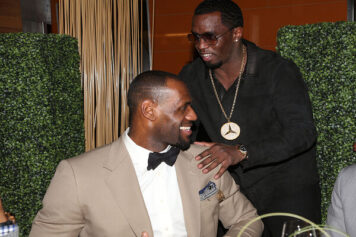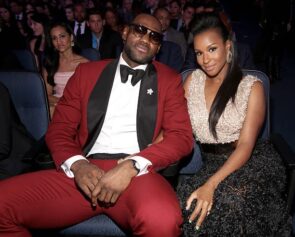To many, David Stern is regarded as the greatest sports commissioner in American professional sports.
On Wednesday, the man who served as the NBA’s leader for three decades passed away at 77 due to complications from a brain hemorrhage he suffered a few weeks ago.
For all the non-NBA fans, or people who aren’t old enough to remember what the NBA was like before Stern took over, to properly understand just how storied Stern’s tenure was, you have to take a step back and look at his career in totality to gain an understanding of why the news of his death is affecting so many.
Statement from Michael Jordan: pic.twitter.com/Q7AGlvwLdn
— Estee Portnoy (@esteep) January 1, 2020
“David took over the NBA in 1984 with the league at a crossroads. But over the course of 30 years as Commissioner, he ushered in the modern global NBA,” said current NBA Commissioner Adam Silver, who was mentored by Stern.
“He launched groundbreaking media and marketing partnerships, digital assets and social responsibility programs that have brought the game to billions of people around the world. Because of David, the NBA is a truly global brand, making him not only one of the greatest sports commissioners of all time but also one of the most influential business leaders of his generation.”
And for many of the players who came up in the league that Stern globalized, shaking his hand on draft night was the ultimate symbol of success.
I will never EVER forget when you called my name on stage and I shook your hand. My dream came true!!! Thank you for your commitment to the beautiful game of basketball that has changed so many young adult/kids lives and more importantly your vision to make our game become WORLDWIDE was a vision only you could make happen! You did just that. Making our game the greatest sport in the world! Was a honor to know you personally. Rest In Paradise David Stern! My prayers go to your family and friends throughout this difficult time,” wrote LeBron James on his Instagram account.
From the Magic and Bird era to Michael Jordan and the Bulls in the 90s, many of the things fans love about the NBA are because of Stern. He helped create the Dream Team, was instrumental in the development of the WNBA, and made the game of basketball an international sport. Seven teams joined the league, and six relocated during his tenure. League revenue went through the roof, the game was put on multiple TV networks, and player salaries increased.
History will always remind us that the NBA has two eras: before Stern was in charge, and after he got a chance to be in control.
However, part of that history is uncomfortable.
Before Stern became the leader of the NBA, he served as the league’s counsel and was involved when the NBA tried to blackball Connie Hawkins during the ‘60s, and he was around when Oscar Robertson took on the league in a fight that led to player free agency.
And in the ‘90s, the NBA had their very own Colin Kaepernick-like “situation.” Earlier this year, Stern made news when he said that he thought “Kaepernick would still have a job if he played in the NBA instead of the NFL.” The quote was beyond hypocritical as Stern was in charge when Mahmoud Abdul-Rauf was blackballed by teams in the league after he refused to stand for the national anthem.
But, no matter how many still feel a way about Rauf’s situation in the era of Kaepernick, the 2000s brought even more drama to Stern and the NBA. “The Malice at the Palace” led to the suspension of nine black players for a total of 146 games, and a loss of $11 million in salary. The game that Stern had packaged to White America and the rest of the world was now being viewed as “too black” and “too hood,” and with Allen Iverson being one of the most famous players in the league, Stern instituted a dress code that was beyond racist, and directed at black players in the league.
In 2005, Stern instituted the policy that required players to “wear business casual attire” to games and a sports coat with dress shoes on the bench. Shorts, chains, sleeveless shirts, headgear of any kind, and sunglasses were all banned.
Hugs! Dave Stern Has A Mandated Dress Code For All Nba Players To Get Rid Of The Thuggary In The Nba? – http://tinyurl.com/n5top3
— nbablog.co.cc (@nbablogc) August 4, 2009
There was also the Tim Donaghy scandal that took place, igniting every conspiracy theorist to believe their ideas about referee rigging games was true. And if you ask any diehard Lakers fan about Stern, I’m sure they will bring up how he shut down the Chris Paul trade in 2011 that would have made them an immediate title contender.
As the guardian of the league, Stern was the ultimate chess player, and bully, when needed.
According to ESPN’s Adrian Wojnarowski, Stern walked into the locker room with the Eastern and Western All-Stars during All-Star Weekend in 2011, as the owners and players were fighting for a new collective bargaining agreement, and threatened the players to fall into line before the lockout date.
I know where the bodies are buried in the NBA, because I put some of them there,” Stern reportedly said.
Anytime you’re in control of sports league, you’re guaranteed to be cheered and jeered, and Stern had his fair share of both throughout his decades affiliated with the NBA.
To some, he will be remembered for all his wrongs, while others will reflect on his successes. And that’s usually the case when people who had such a significant impact on others dies.
But despite how future generations will tell the story of David Stern, what can’t be argued is how many of his fingerprints will always remain all over the game of basketball.



